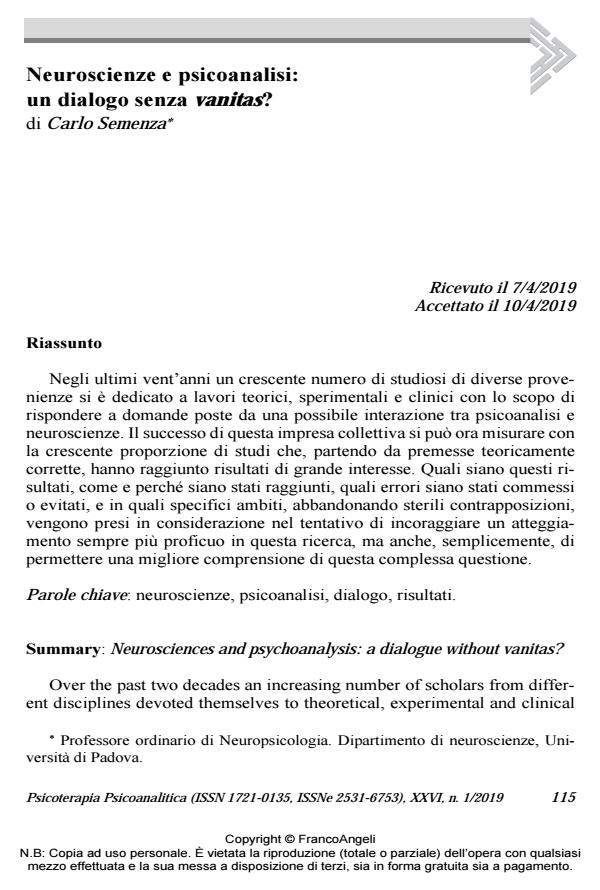Neurosciences and psychoanalysis: a dialogue without vanitas?
Journal title PSICOTERAPIA PSICOANALITICA
Author/s Carlo Semenza
Publishing Year 2019 Issue 2019/1
Language Italian Pages 13 P. 115-127 File size 183 KB
DOI 10.3280/PSP2019-001008
DOI is like a bar code for intellectual property: to have more infomation
click here
Below, you can see the article first page
If you want to buy this article in PDF format, you can do it, following the instructions to buy download credits

FrancoAngeli is member of Publishers International Linking Association, Inc (PILA), a not-for-profit association which run the CrossRef service enabling links to and from online scholarly content.
Over the past two decades an increasing number of scholars from different disciplines devoted themselves to theoretical, experimental and clinical studies aiming at answering questions about a possible in-teraction between psychoanalysis and neurosciences. The success of this collective enterprise can now be measured with the increasing pro-portion of studies that, starting from theoretically correct premises, ob-taineded results of great interest. Which results, how and why they were obtained, which errors were made or avoided and in which spe-cific domains, are discussed here in the attempt to encourage, aban-doning sterile contrappositions, an increasingly proficuous attitutude in this research, but also, simply, to help in the comprehension of these complex issues.
Keywords: Neurosciences, psychoanalysis, dialogue, results.
Carlo Semenza, Neuroscienze e psicoanalisi: un dialogo senza vanitas? in "PSICOTERAPIA PSICOANALITICA" 1/2019, pp 115-127, DOI: 10.3280/PSP2019-001008